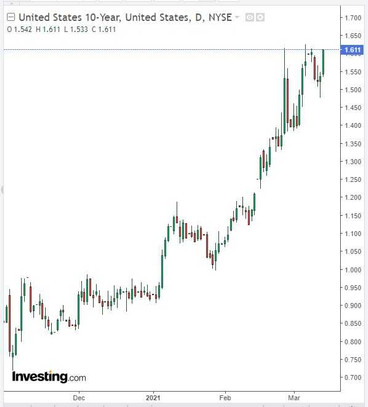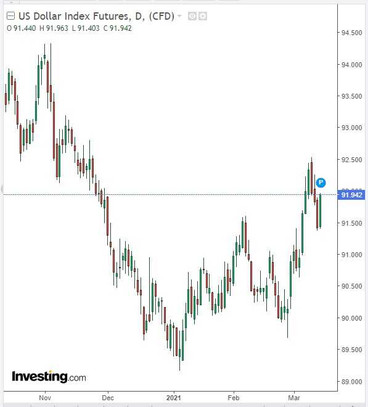At the beginning of this week, Brent oil quotes reached a new 14-month high of $ 71.82 per barrel, however, subsequently fell against the background of the dollar strengthening to a local intra-week low near 66.92.
Despite the fact that oil prices are rising again, it is likely that they will end this week in negative territory, maintaining, in general, a tendency for further growth.
Oil prices this week were supported by the monthly OPEC report, in which coalition experts raised their forecast for global oil demand in 2021. The cartel raised its forecast for global oil demand this year by 200,000 barrels a day and its forecast for global economic growth by 0.3 percentage points to 5.1%, citing a new 1.9 trillion US fiscal stimulus package dollars and "further recovery of Asian economies". According to OPEC economists, "economic activity is likely to grow, and the effects of the pandemic will weaken". According to OPEC, the demand for oil in 2021 will grow by 4.9 million barrels per day compared to last year.
On the cautious optimism, OPEC+ on March 4 decided to increase production by 150,000 barrels per day (versus economists' forecast of +1.5 million barrels). Thus, the total reduction in OPEC+ production is 6.9 million barrels per day against more than 9 million barrels per day in the midst of the crisis in the oil market, when oil futures fell below zero.
Oil prices are up 80% from late October lows and the rally has accelerated in recent weeks as OPEC decided to extend the bulk of its production restrictions.
The rise in oil prices is also observed against the background of increased demand for gasoline in the United States due to the lifting of antiviral restrictions, while gasoline stocks are falling due to an interruption in the operation of the refinery after the largest storm in Texas in mid-February.
Now, oil market participants await the publication next week of the monthly report of the International Energy Agency (IEA), and today they will pay attention to the publication (at 18:00 GMT) of the weekly data of the oilfield services company Baker Hughes on the number of active rigs in the United States. After their number reached 888 in November 2019, the number of active drilling rigs in the United States subsequently began to decline, and in March 2020, the pace of closure of oil rigs accelerated significantly due to a sharp drop in oil prices.
On the week before last, their number was 403 (against 309, 306, 299, 295, 287, 275 in the previous reporting periods). It is obvious that the number of oil companies in the US is growing again, which is a negative factor for oil prices. Another rise is likely to have a negative impact on oil quotes, but, most likely, only in the short term.
In fact, the dynamics of the oil market at the moment will be determined by the dynamics of the dollar and stock indices, the volume of oil production in the world, as well as information regarding the situation with the coronavirus.
As of this writing, Brent crude oil futures are traded near 69.65 mark, $2.17 below the local high of $71.82 a barrel reached earlier this week. The oil market is still showing a bullish trend.
Meanwhile, the dollar is growing on Friday, recovering its positions after falling the day before, receiving support from the growing yields on US government bonds. Today it rose again and reached 1.611% (after falling earlier this week) versus 0.500%, the level of August 2020.

The DXY dollar index also looks set to rise by the results of the week, despite strong volatility and a drop in the previous three days. As of this writing, DXY futures are traded near 91.94, 50 pips above today's opening price.

The dollar is supported by a faster recovery in the American economy and the signing of the $1.9 trillion economic aid bill by Joe Biden.
Investors' attention today will also be attracted by the publication of statistics from the US on the dynamics of manufacturing inflation and the consumer confidence index from the University of Michigan (at 15:00 GMT). This indicator is expected to come out in March with a value of 78.5. There is a tendency towards a gradual recovery in the growth of the indicator. The data worse than the forecast may negatively affect the dollar in the short term. Better-than-forecast data will strengthen the dollar.





